Saad Al-Ahmadi
Senior Member, IEEE
Parametric Channel Estimation and Design for Active-RIS-Assisted Communications
Oct 26, 2025Abstract:Reconfigurable Intelligent Surface (RIS) technology has emerged as a key enabler for future wireless communications. However, its potential is constrained by the difficulty of acquiring accurate user-to-RIS channel state information (CSI), due to the cascaded channel structure and the high pilot overhead of non-parametric methods. Unlike a passive RIS, where the reflected signal suffers from multiplicative path loss, an active RIS amplifies the signal, improving its practicality in real deployments. In this letter, we propose a parametric channel estimation method tailored for active RISs. The proposed approach integrates an active RIS model with an adaptive Maximum Likelihood Estimator (MLE) to recover the main channel parameters using a minimal number of pilots. To further enhance performance, an adaptive active RIS configuration strategy is employed, which refines the beam direction based on an initial user location estimate. Moreover, an orthogonal angle-pair codebook is used instead of the conventional Discrete Fourier Transform (DFT) codebook, significantly reducing the codebook size and ensuring reliable operation for both far-field and near-field users. Extensive simulations demonstrate that the proposed method achieves near-optimal performance with very few pilots compared to non-parametric approaches. Its performance is also benchmarked against that of a traditional passive RIS under the same total power budget to ensure fairness. Results show that active RIS yields higher spectral efficiency (SE) by eliminating the multiplicative fading inherent in passive RISs and allocating more resources to data transmission
Native-AI Empowered Scalable Architectures and Solutions for Future Non-Terrestrial Networks: An Overview
Jul 16, 2025Abstract:As the path toward 6G networks is being charted, the emerging applications have motivated evolutions of network architectures to realize the efficient, reliable, and flexible wireless networks. Among the potential architectures, the non-terrestrial network (NTN) and open radio access network (ORAN) have received increasing interest from both academia and industry. Although the deployment of NTNs ensures coverage, enhances spectral efficiency, and improves the resilience of wireless networks. The high altitude and mobility of NTN present new challenges in the development and operations (DevOps) lifecycle, hindering intelligent and scalable network management due to the lack of native artificial intelligence (AI) capability. With the advantages of ORAN in disaggregation, openness, virtualization, and intelligence, several works propose integrating ORAN principles into the NTN, focusing mainly on ORAN deployment options based on transparent and regenerative systems. However, a holistic view of how to effectively combine ORAN and NTN throughout the DevOps lifecycle is still missing, especially regarding how intelligent ORAN addresses the scalability challenges in NTN. Motivated by this, in this paper, we first provide the background knowledge about ORAN and NTN, outline the state-of-the-art research on ORAN for NTNs, and present the DevOps challenges that motivate the adoption of ORAN solutions. We then propose the ORAN-based NTN framework, discussing its features and architectures in detail. These include the discussion about flexible fronthaul split, RAN intelligent controllers (RICs) enhancement for distributed learning, scalable deployment architecture, and multi-domain service management. Finally, the future research directions, including combinations of the ORAN-based NTN framework and other enabling technologies and schemes, as well as the candidate use cases, are highlighted.
Energy-Efficient Optimization of Multi-User NOMA-Assisted Cooperative THz-SIMO MEC Systems
Apr 08, 2023



Abstract:The various requirements in terms of data rates and latency in beyond 5G and 6G networks have motivated the integration of a variety of communications schemes and technologies to meet these requirements in such networks. Among these schemes are Terahertz (THz) communications, cooperative non-orthogonal multiple-access (NOMA)-enabled schemes, and mobile edge computing (MEC). THz communications offer abundant bandwidth for high-data-rate short-distance applications and NOMA-enabled schemes are promising schemes to realize the target spectral efficiencies and low latency requirements in future networks, while MEC would allow distributed processing and data offloading for the emerging applications in these networks. In this paper, an energy-efficient scheme of multi-user NOMA-assisted cooperative THz single-input multiple-output (SIMO) MEC systems is proposed to allow the uplink transmission of offloaded data from the far cell-edge users to the more computing resources in the base station (BS) through the cell-center users. To reinforce the performance of the proposed scheme, two optimization problems are formulated and solved, namely, the first problem minimizes the total users' energy consumption while the second problem maximizes the total users' computation energy efficiency (CEE) for the proposed scheme. In both problems, the NOMA user pairing, the BS receive beamforming, the transmission time allocation, and the NOMA transmission power allocation coefficients are optimized, while taking into account the full-offloading requirements of each user as well as the predefined latency constraint of the system. The obtained results reveal new insights into the performance and design of multi-user NOMA-assisted cooperative THz-SIMO MEC systems.
On the Achievable Max-Min User Rates in Multi-Carrier Centralized NOMA-VLC Networks
May 26, 2021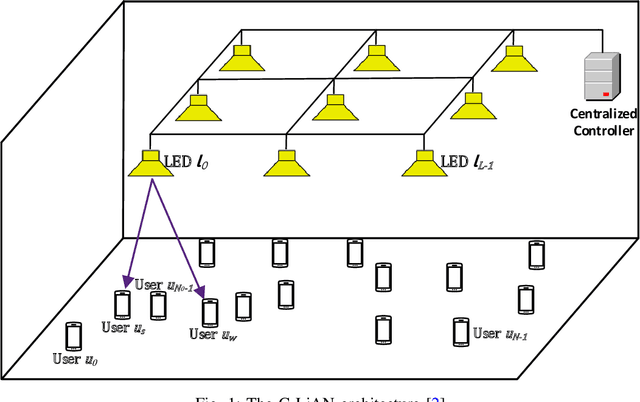
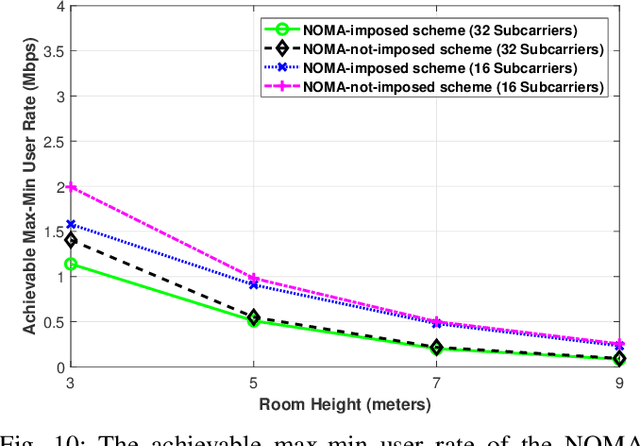
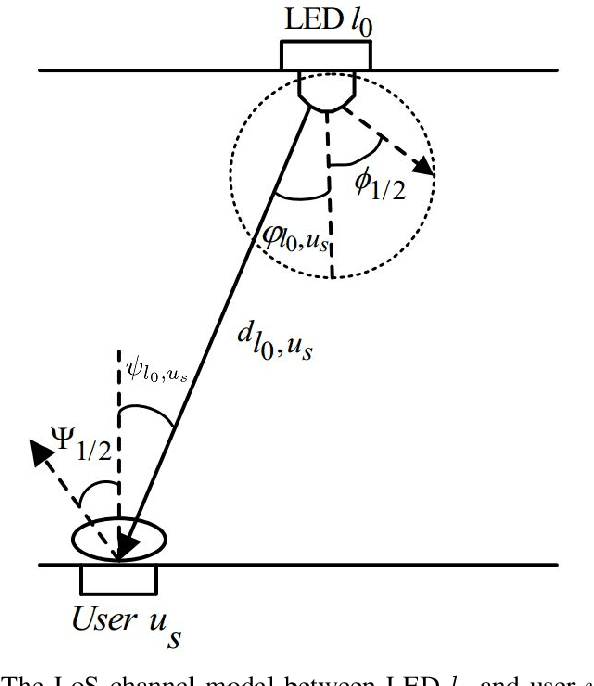
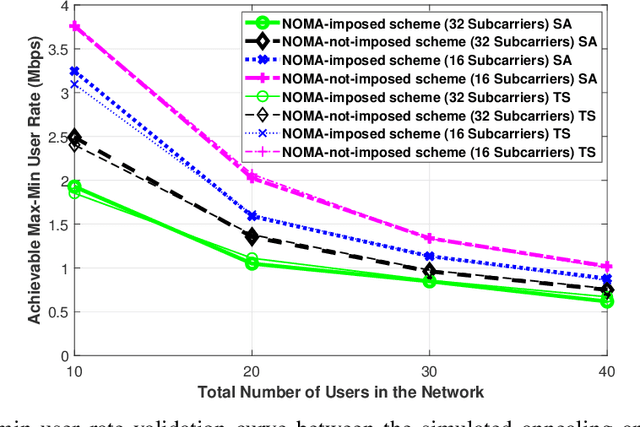
Abstract:Visible light communications (VLC) is gaining interest as one of the enablers of short-distance, high-data-rate applications, in future beyond 5G networks. Moreover, non-orthogonal multiple-access (NOMA)-enabled schemes have recently emerged as a promising multiple-access scheme for these networks that would allow realization of the target spectral efficiency and user fairness requirements. The integration of NOMA in the widely adopted orthogonal frequency-division multiplexing (OFDM)-based VLC networks would require an optimal resource allocation for the pair or the cluster of users sharing the same subcarrier(s). In this paper, the max-min rate of a multi-cell indoor centralized VLC network is maximized through optimizing user pairing, subcarrier allocation, and power allocation. The joint complex optimization problem is tackled using a low-complexity solution. At first, the user pairing is assumed to follow the divide-and-next-largest-difference user-pairing algorithm (D-NLUPA) that can ensure fairness among the different clusters. Then, subcarrier allocation and power allocation are solved iteratively through both the Simulated Annealing (SA) meta-heuristic algorithm and the bisection method. The obtained results quantify the achievable max-min user rates for the different relevant variants of NOMA-enabled schemes and shed new light on both the performance and design of multi-user multi-carrier NOMA-enabled centralized VLC networks.
Energy-Efficient Coverage Enhancement of Indoor THz-MISO Systems: An FD-NOMA Approach
Apr 12, 2021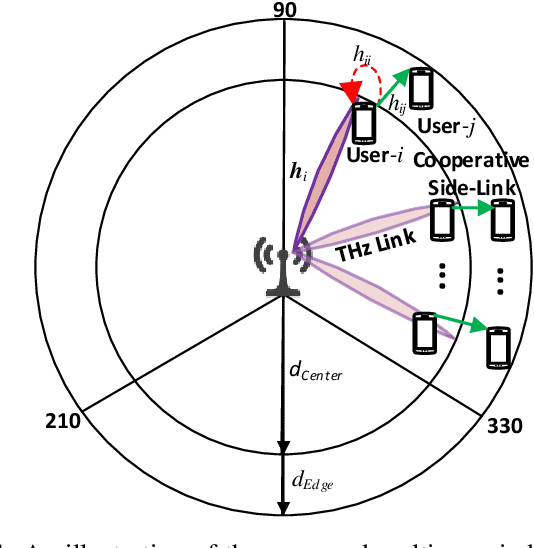
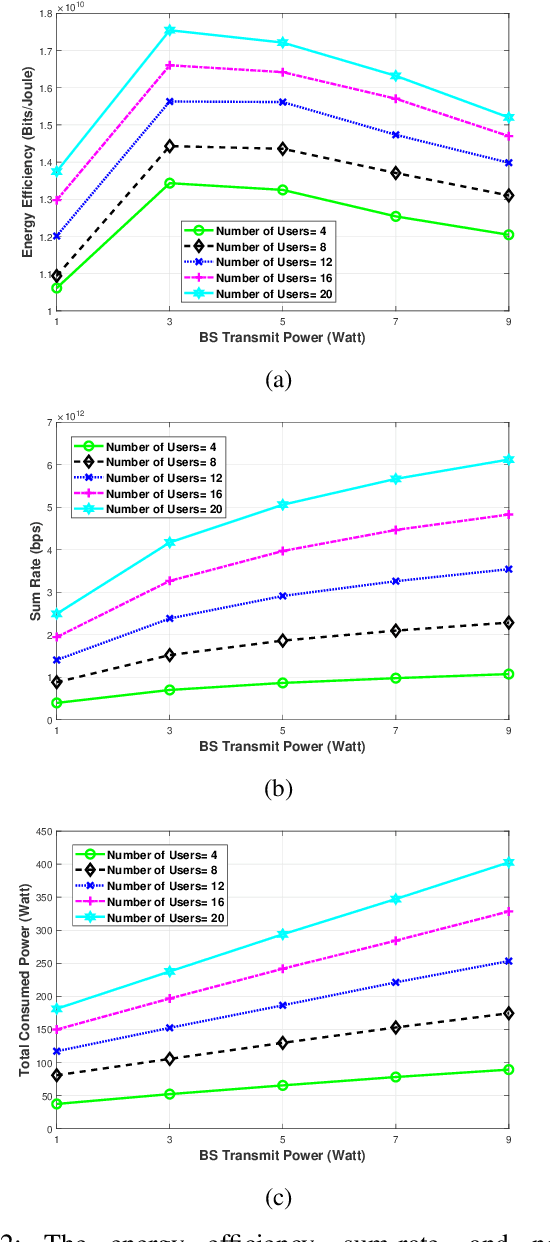
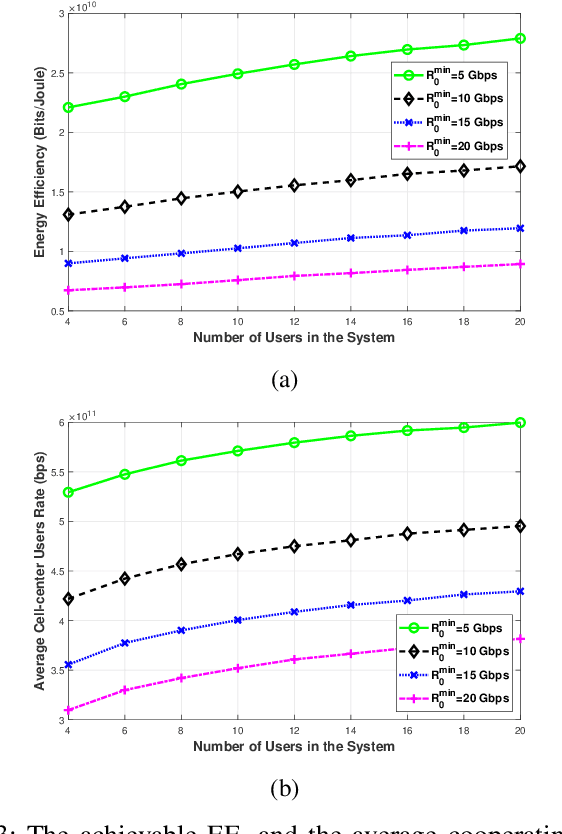
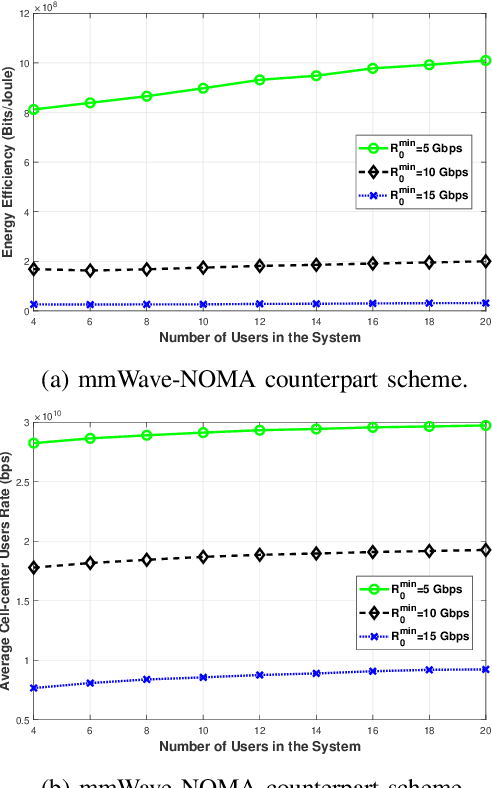
Abstract:Terahertz (THz) communication is gaining more interest as one of the envisioned enablers of high-data-rate short-distance indoor applications in beyond 5G networks. Moreover, non-orthogonal multiple-access (NOMA)-enabled schemes are promising schemes to realize the target spectral efficiency, low latency, and user fairness requirements in future networks. In this paper, an energy-efficient cooperative NOMA (CNOMA) scheme that guarantees the minimum required rate for cell-edge users in an indoor THz-MISO communications network, is proposed. The proposed cooperative scheme consists of three stages: (i) beamforming stage that allocates BS beams to THz cooperating cell-center users using analog beamforming with the aid of the cosine similarity metric, (ii) user pairing stage that is tackled using the Hungarian algorithm, and (iii) a power allocation stage for the BS THz-NOMA transmit power as well as the cooperation power of the cooperating cell-center users, which is optimized in a sequential manner. The obtained results quantify the EE of the proposed scheme and shed new light on both the performance and design of multi-user THz-NOMA-enabled networks.
Performance Evaluation of Machine Learning Techniques for DoS Detection in Wireless Sensor Network
Apr 05, 2021
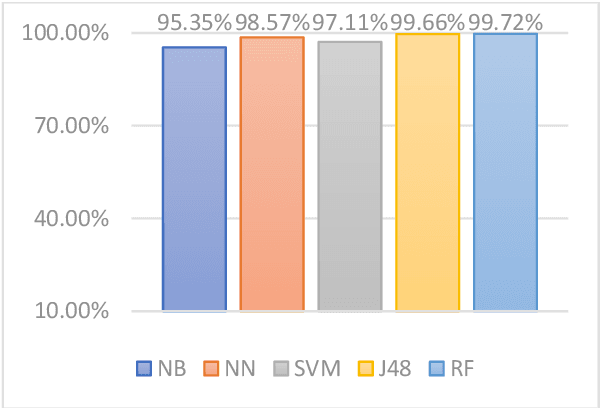
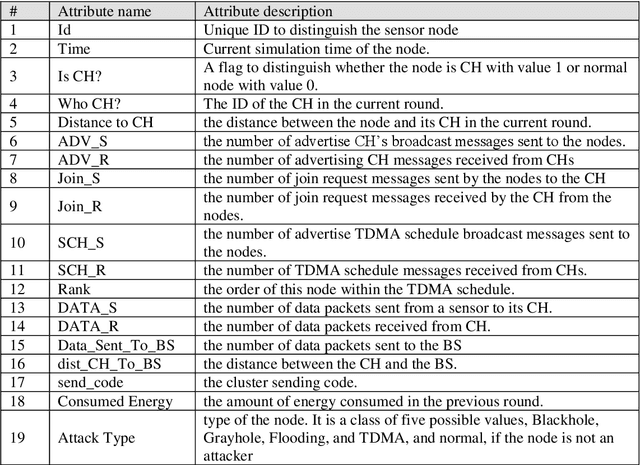
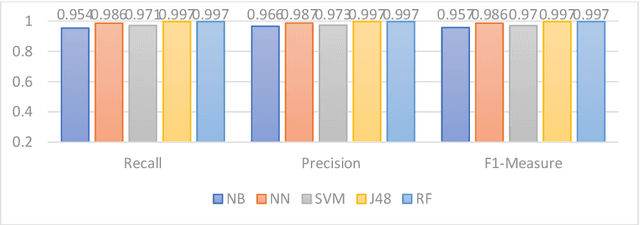
Abstract:The nature of Wireless Sensor Networks (WSN) and the widespread of using WSN introduce many security threats and attacks. An effective Intrusion Detection System (IDS) should be used to detect attacks. Detecting such an attack is challenging, especially the detection of Denial of Service (DoS) attacks. Machine learning classification techniques have been used as an approach for DoS detection. This paper conducted an experiment using Waikato Environment for Knowledge Analysis (WEKA)to evaluate the efficiency of five machine learning algorithms for detecting flooding, grayhole, blackhole, and scheduling at DoS attacks in WSNs. The evaluation is based on a dataset, called WSN-DS. The results showed that the random forest classifier outperforms the other classifiers with an accuracy of 99.72%.
 Add to Chrome
Add to Chrome Add to Firefox
Add to Firefox Add to Edge
Add to Edge